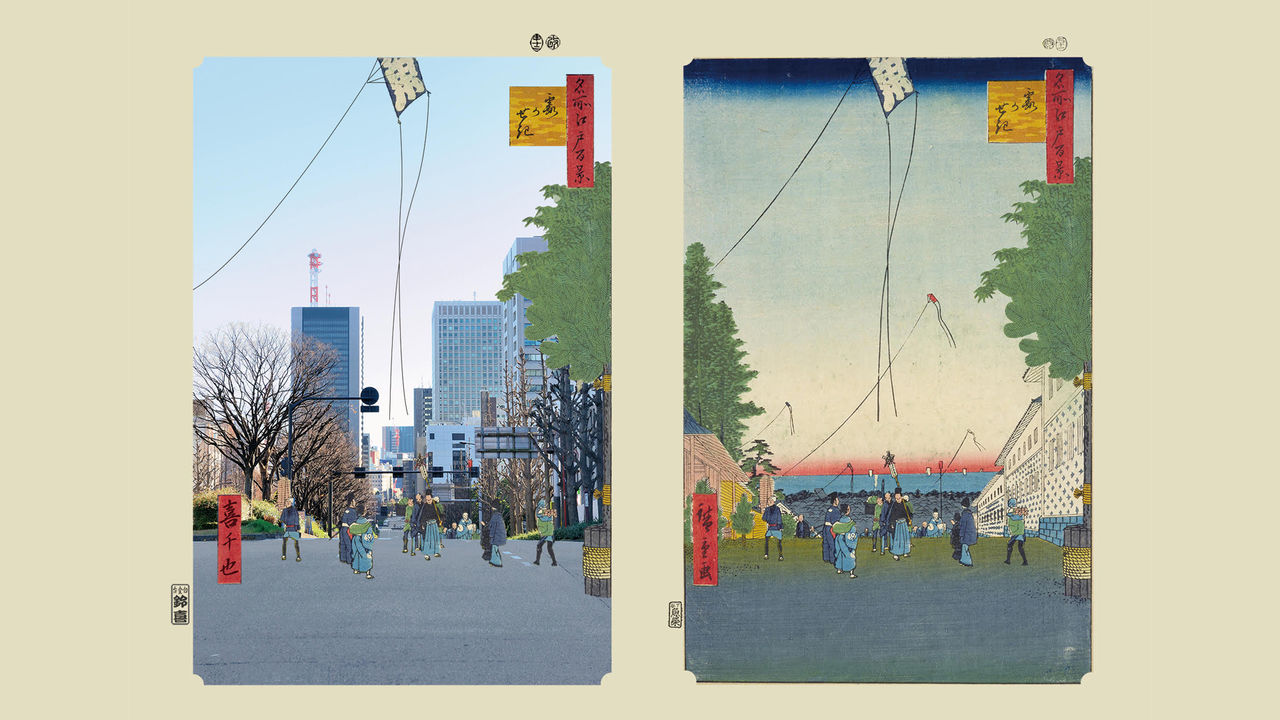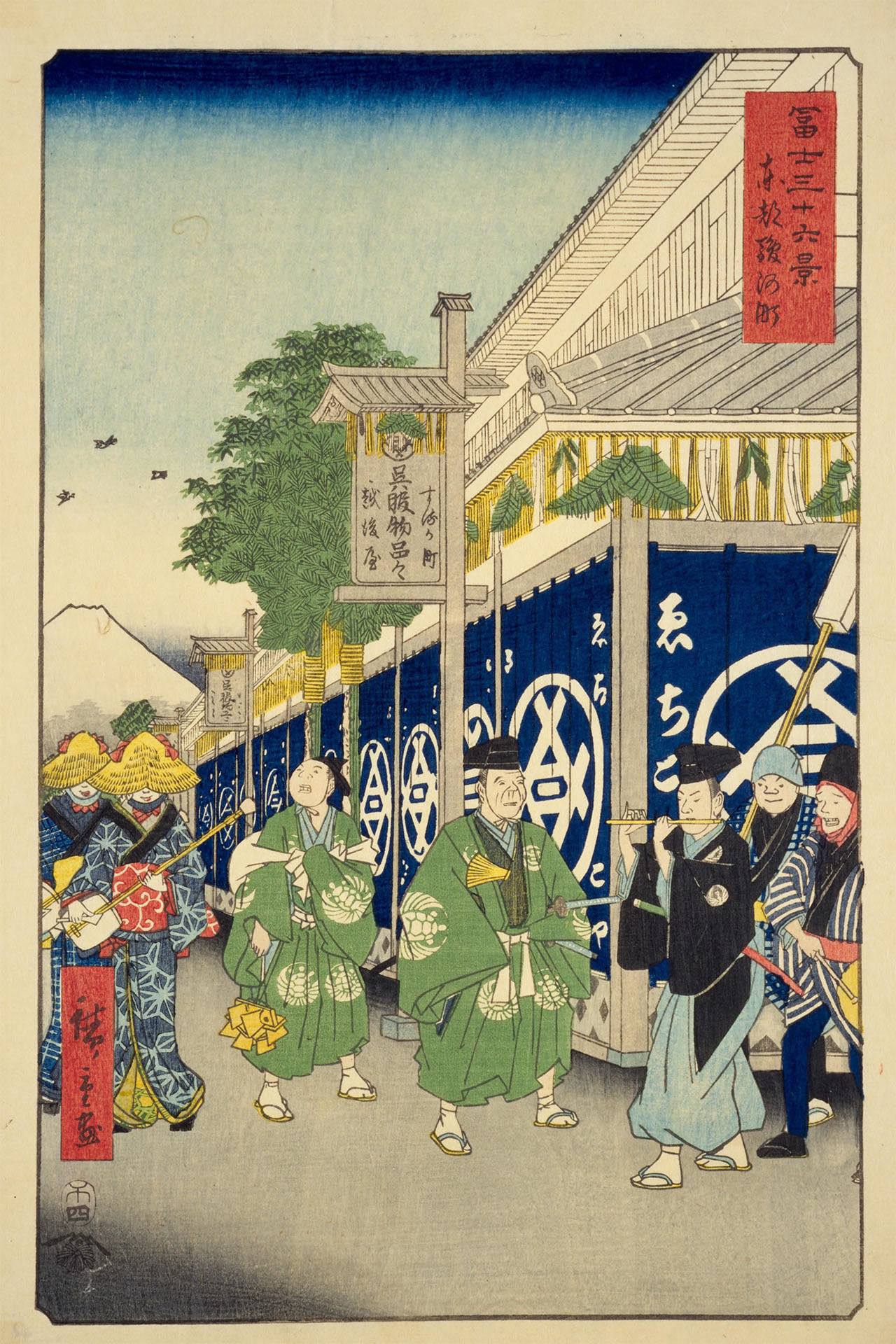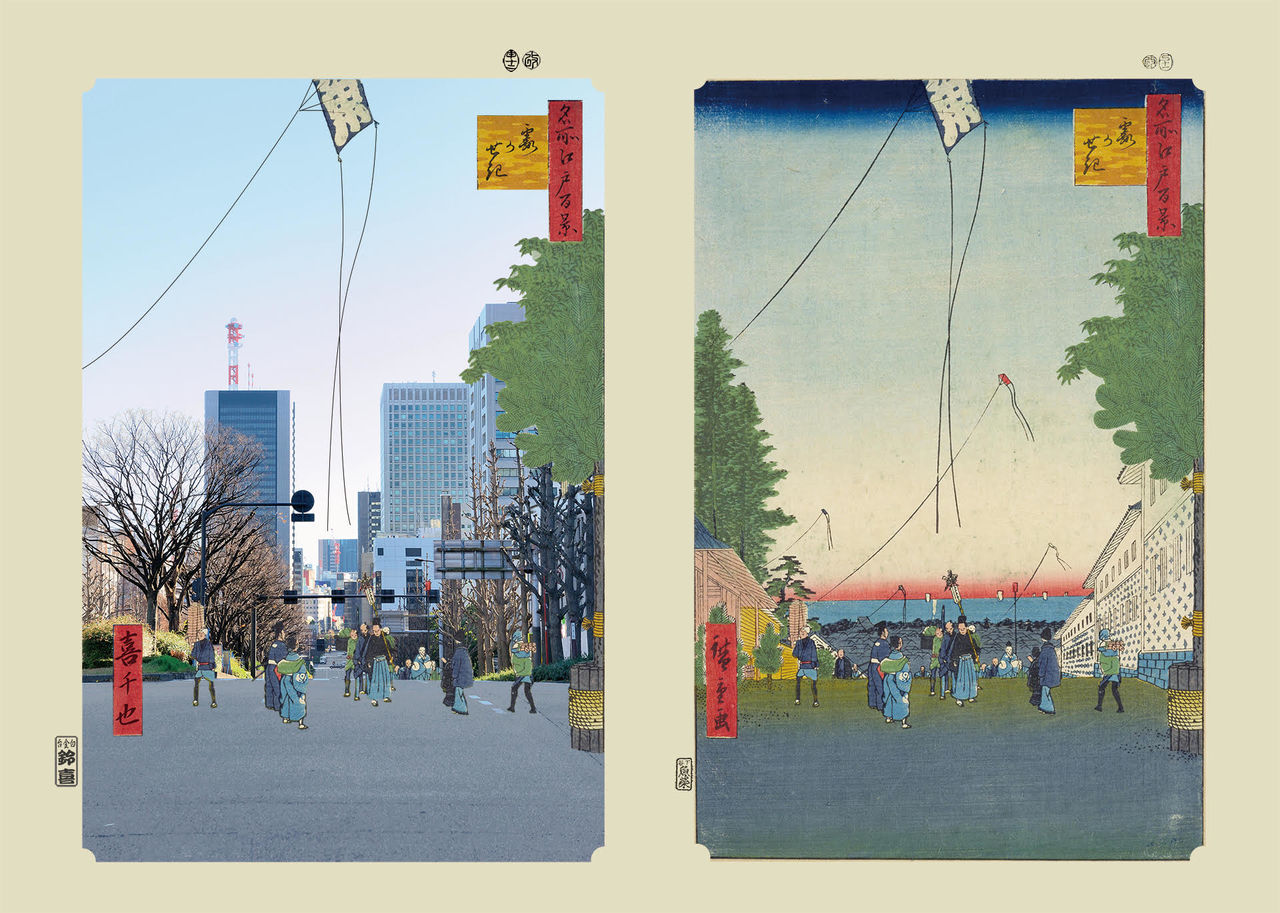
Celebrating New Year in Kasumigaseki
Guideto Japan
Culture- English
- 日本語
- 简体字
- 繁體字
- Français
- Español
- العربية
- Русский
A Signature New Year Scene
The name Kasumigaseki is said to originate from the legendary prince Yamato Takeru. To prepare for a raid on the northern island of Ezo—now Hokkaidō—during his campaign to conquer the eastern lands, he established a checkpoint (seki) in the area that was frequently covered in fog (kasumi) drifting in from the bay. Today, the shore of Tokyo Bay has retreated a considerable distance away, but at the time Shōgun Tokugawa Ieyasu relocated to the area in 1590, the water’s edge was still just beyond Kasumigaseki.
In Hiroshige’s time, the hill that ran between the residences of Kuroda, lord of the Fukuoka domain, and Asano, lord of the Hiroshima domain, was referred to as Kasumigaseki. In the original picture, the gate of the the Kuroda residence is decorated with gateway pines and a kite bearing the character for fish, a reference to One Hundred Famous Views of Edo publisher Totoya Eikichi, is flying in the sky. Kites were once regarded as auspicious talismans for boys’ healthy development and were given as presents at the end of the year. There are few places now in Tokyo to fly kites, but even so kite-flying continues to be a New Year tradition.
Walking in the center is a group of daikagura dancers who are accompanied on the left by a performer of Mikawa manzai, a type of celebratory performance, making this a representative New Year scene.
When taking my photo, which was one of my first in the series, rather than using Kasumigaseki hill that appears in the original picture, I shot Shiomi hill, one block to the South. In the Edo period this was behind the Kuroda residence and was known as the “back street” of Kasumigaseki. I chose this view for my piece as it provided a similar scene to the original, with open space at the top of the hill looking toward Ginza in the distance.
Related Information
Another Hiroshige New Year Scene
A different New Year work by Hiroshige is “Suruga District in the Eastern Capital” from his Thirty-six Views of Mount Fuji. Suruga, now the Nihonbashi-Muromachi district, was the location of Echigoya, one of the largest clothing retailers in the Edo period. The scene depicts a large pine decoration outside the store. Even today, pine boughs are placed outside houses and shops so that the New Year deities will enter without hesitation.
The picture also features performers who would make the rounds at samurai residences and shops during the New Year, receiving money for the entertainment they provided. Today, a lasting influence of this is found in the professional comedians and other performers who appear nearly nonstop on Japanese television over the three-day New Year holiday.
 (Courtesy of the National Diet Library)
(Courtesy of the National Diet Library)
One Hundred Famous Views of Edo by Kichiya, the Ukiyo Photographer: Today’s Tokyo Through Hiroshige’s Eyes
Meisho Edo hyakkei, known in the West as One Hundred Famous Views of Edo, was one of ukiyo-e artist Utagawa Hiroshige’s most celebrated works, influencing even Western artists like Van Gogh and Monet. Drawn in Hiroshige’s final years and published from 1856 to 1861, the series depicted the sights of Edo (as Tokyo was then known) through the changing seasons. Audiences around the world admired Hiroshige’s inventive use of bold compositions, bird’s-eye-view perspectives, and vivid colors. A century and a half later, “ukiyo photographer” Kichiya has set himself the task of recreating each of these views with a photograph taken in the same place, at the same time of year, from the same angle. Join us in this new series at Nippon.com on a tour of these “famous views” in Edo and modern-day Tokyo, guided by Kichiya’s artistry and his knowledge of old maps and life in Edo.
tourism Tokyo ukiyo-e One Hundred Famous Views of Edo by Kichiya kantō
